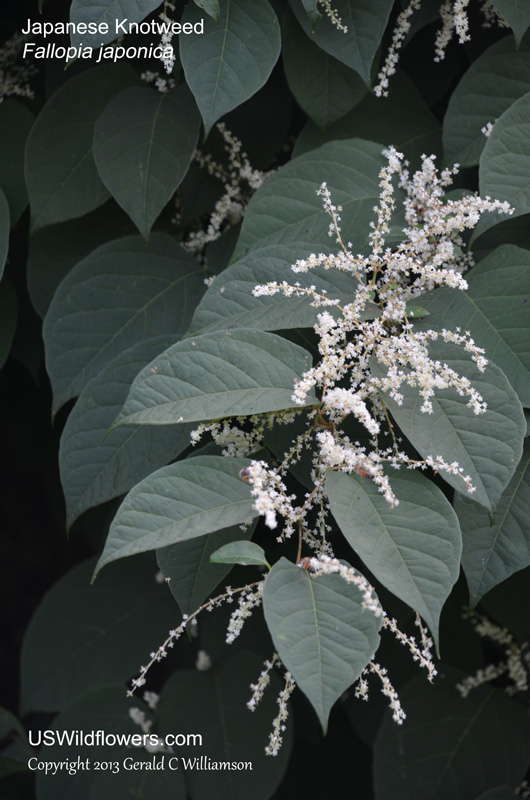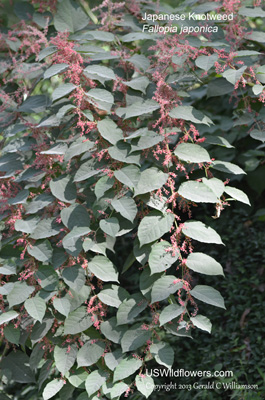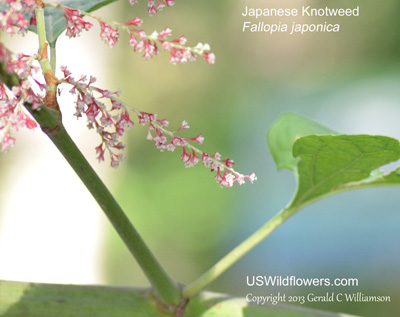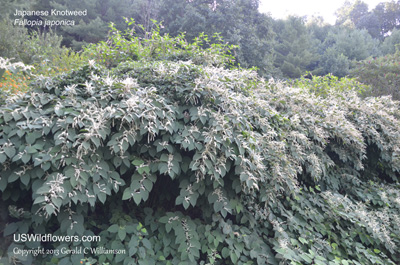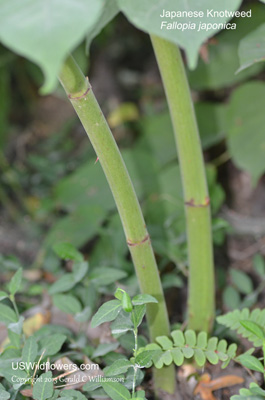Wildflowers of the United States | |||||||||||||
| |||||||||||||
Fallopia japonica - Japanese Knotweed, Crimson Beauty, Mexican bamboo, Japanese Fleece Flower, Reynoutria. Japanese Knotweed is a highly invasive species native to Asia, introduced as an ornamental in the United States in the 1800s. It reproduces vegetatively from its rhizomes, so removing it and discarding the remains propagate rather than limit the plant. In England it is classified as Controlled Waste and must be burned or transported to a licensed disposal site; it is illegal to include Japanese Knotweed in household garbage. Reportedly UK mortgage lenders are refusing to make loans on properties where the plant is found until remediation plans are made. In the United States, it is officially considered a noxious weed in Alabama, California, Oregon, Vermont, and Washington State.
| Fallopia japonica was formerly included in Polygonum (along with the other 11 members of the genus Fallopia), and is still classified as Polygonum cuspidatum in many publications. But some authorities, based on molecular study as well as erect stems, classify Japanese Knotweed as Reynoutria japonica. ITIS lists it in Fallopia; Weakley lists it in Reynoutria; USDA lists it in Polygonum. Found in: AK, AR, CA, CO, CT, DC, DE, GA, IA, ID, IL, IN, KS, KY, LA, MA, MD, ME, MI, MN, MO, MS, MT, NC, NE, NH, NJ, NY, OH, OK, OR, PA, RI, SC, SD, TN, UT, VA, VT, WA, WI, WV Leave comments on Fallopia japonica at this link.  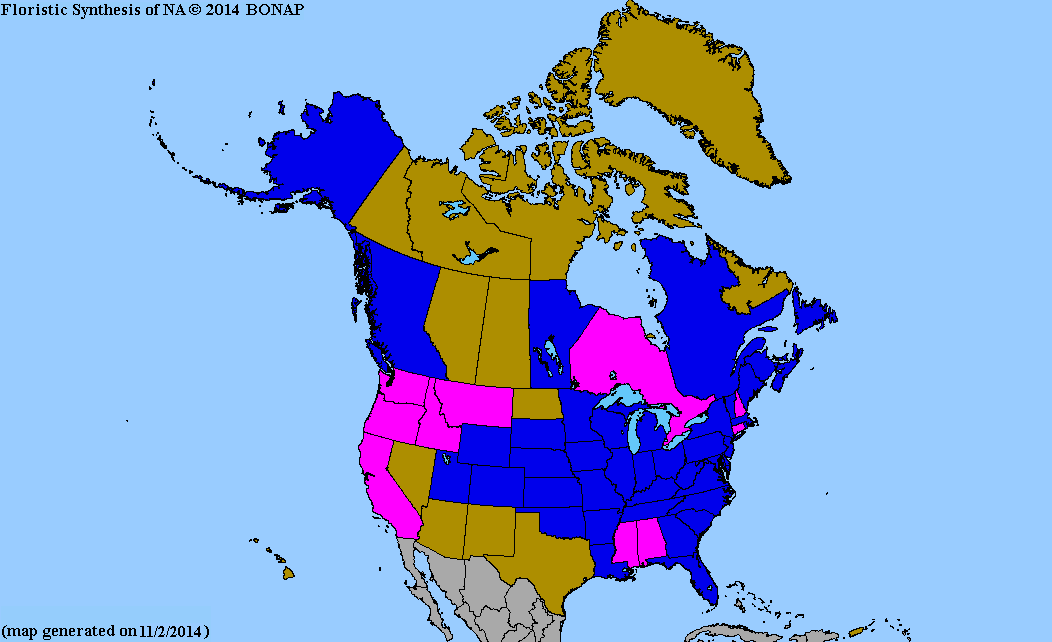 Map courtesy of The Biota of North America Program. Map color key Search Our Database: Enter any portion of the Scientific, Common Name, or both. Do a general Google search of the entire site: #ad #ad
| #ad
| | ||||||||||
|
Commercial / Cookie Notice Looking for Wildflowers for a specific state? Check here: | |||||||||||||
|
All content except USDA Plants Database map Copyright Gerald C. Williamson 2025 | |||||||||||||
Code Update 20230302

